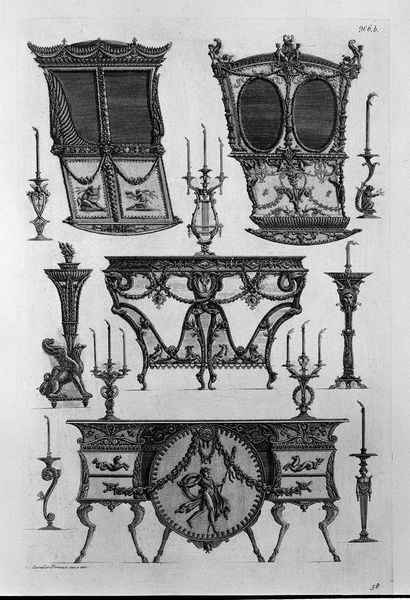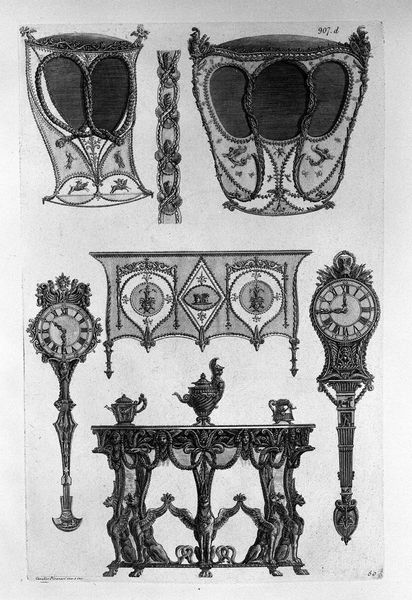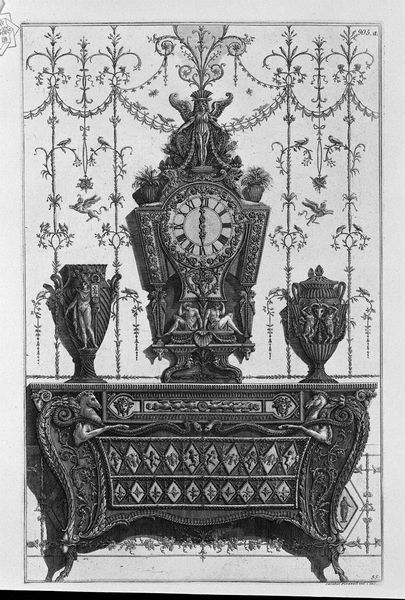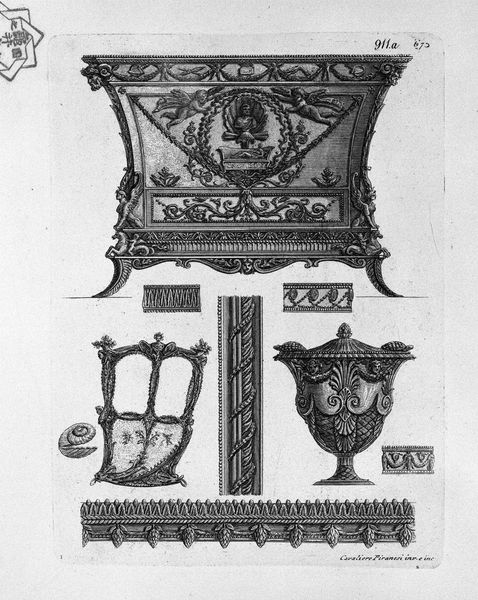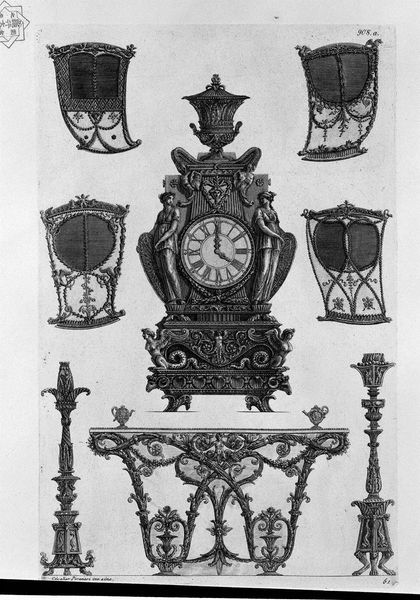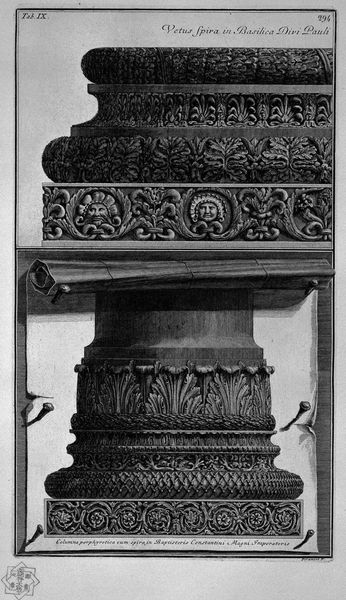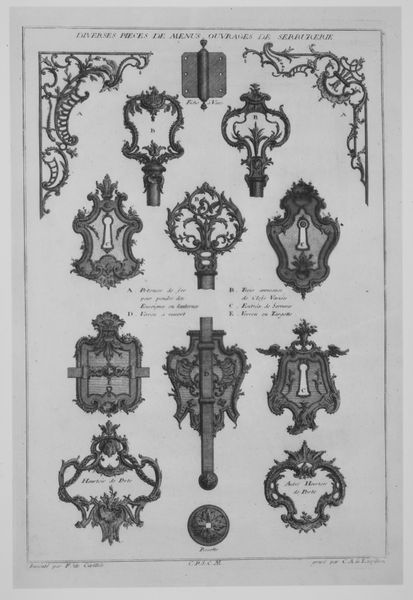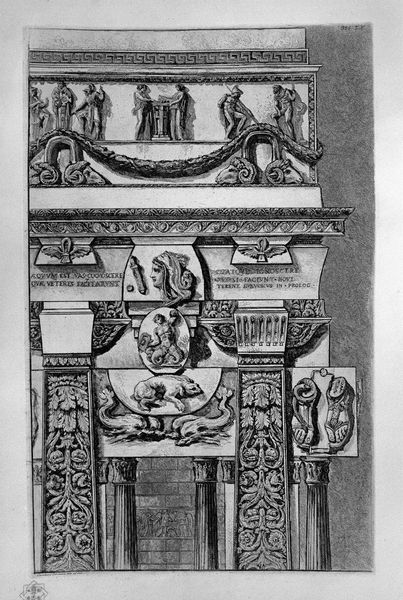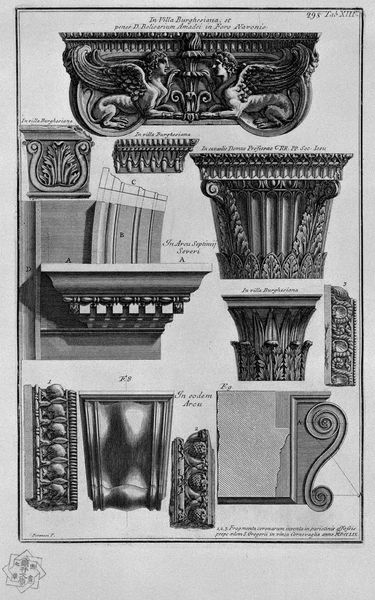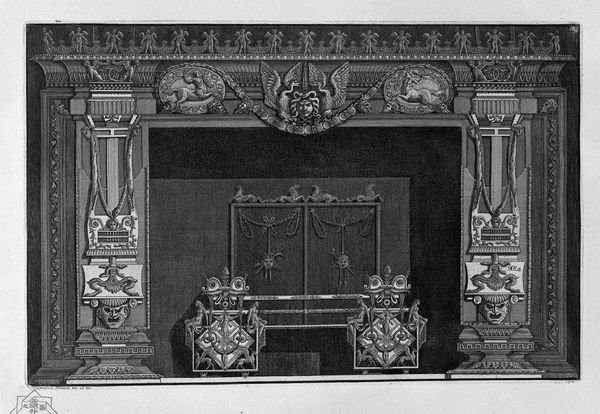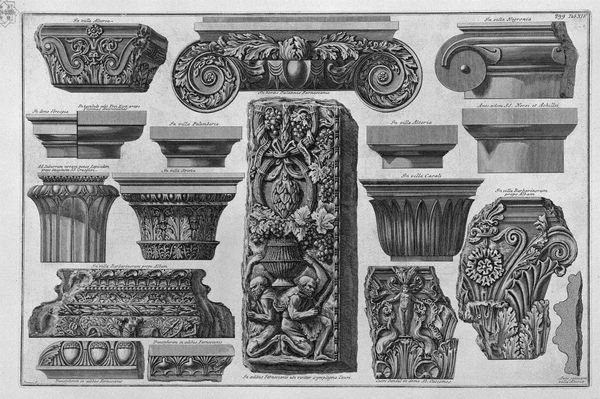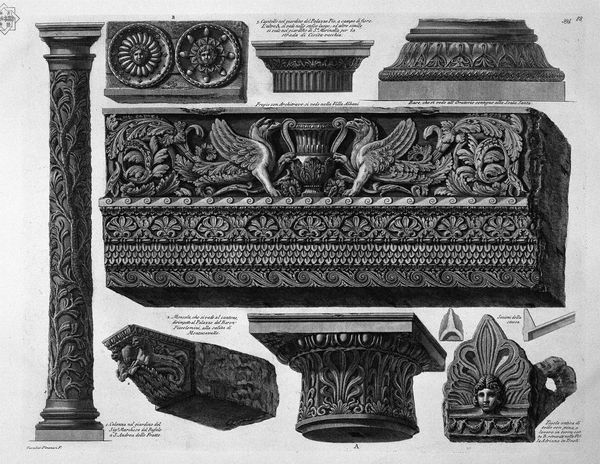
One side of the sedan, a dresser, and various other objects and decorative details
0:00
0:00
drawing, print, metal, etching, glass, engraving
#
pencil drawn
#
drawing
#
baroque
# print
#
metal
#
etching
#
furniture
#
form
#
glass
#
geometric
#
line
#
decorative-art
#
engraving
Copyright: Public domain
Curator: Here we have a print titled "One side of the sedan, a dresser, and various other objects and decorative details" by Giovanni Battista Piranesi. It's rendered through etching and engraving techniques. What strikes you about this arrangement? Editor: The overwhelming detail, first and foremost. It’s a study in opulent Baroque sensibility. Each object seems to be competing for attention with its neighbor in terms of embellishment. A feast for the eyes. Curator: Absolutely, and Piranesi, working in the 18th century, was deeply engaged with ideas of antiquity and grandeur. We see a kind of revivalist impulse, an attempt to synthesize historical motifs in these designs for furnishings. The influence of classical Roman art and architecture is really unmistakable. The decorative elements echo motifs found on ancient Roman artifacts, particularly within the grotesques. Editor: I notice the frequent appearance of avian figures—are those symbolic beyond mere decoration? That rooster perched so prominently, for instance. Is it simply for elegance, or something more? Curator: Roosters were symbols of vigilance and resurrection. As for symbolism, one has to tread cautiously. While we can propose some objects possess underlying significance based on period convention, decorative art often prioritized aesthetic impact. Those framed figures certainly hint at something beyond their purely ornamental role, which might be associated with victory or physical contests. Editor: Thinking about the time, is there commentary implied through this presentation of luxury? Was Piranesi hinting at the decadence that often accompanies immense wealth, particularly in those closing decades before revolutionary upheaval? Curator: It's very difficult to assign such a directly political reading. While Piranesi undoubtedly operated within a world of increasing social disparity, these drawings function primarily as design catalogues intended for consumption by affluent patrons, demonstrating to potential buyers or craftsman how ancient designs can translate into current production. However, the obsessive quality and layering of references can now be viewed as both intriguing and, perhaps unintentionally, critically astute. Editor: Looking again, at the mirrored effect employed in certain components, or even just the symmetry of placement, speaks to me of ritual display. Like pieces arranged for a ceremony more than practical use. It provokes reflection on the theatricality of power. Curator: I think that's an interesting consideration and one that prompts us to contemplate how cultural meanings of visual symbols can be adapted, reclaimed, and reinterpreted across generations, retaining something essential in their design. Editor: I agree. These objects offer insights that move beyond function into how luxury reflects identity and cultural memory, if we remember how to interpret what the makers considered memorable.
Comments
No comments
Be the first to comment and join the conversation on the ultimate creative platform.
